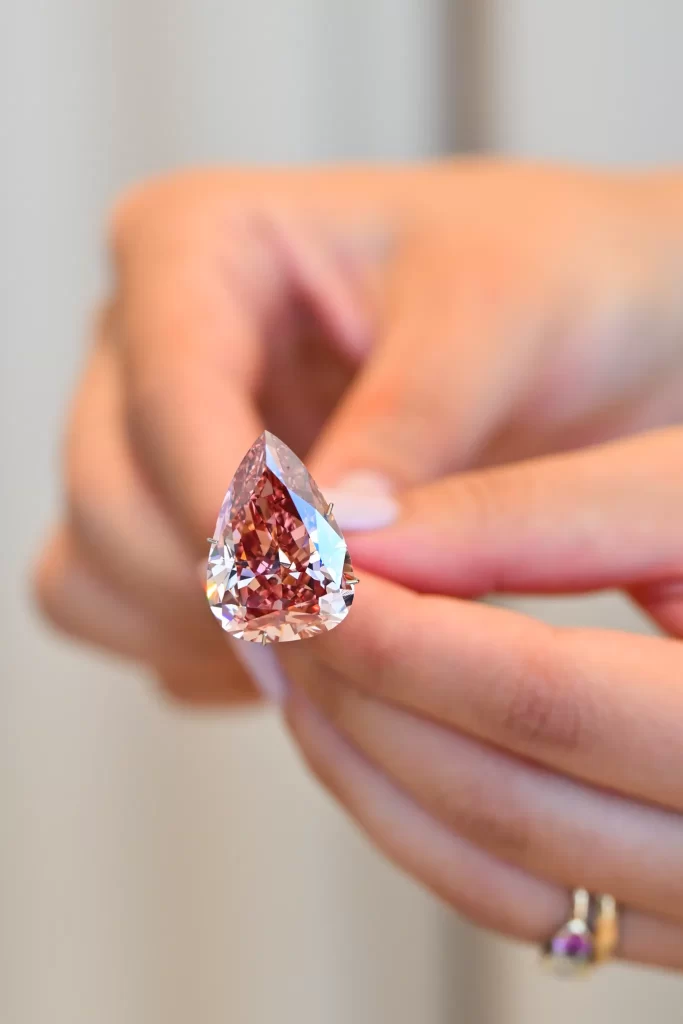
It’s a good time to buy natural color diamonds. “The recent price declines in the white goods created an overall negative psychological effect on all diamonds. This is probably the reason we also witnessed a decline of 0.1% in the Fancy Color Index in Q2,” said Fancy Color Research Foundation (FCRF) advisory board member Eden Rachminov.
According to the FCRF, yellow diamonds displayed a decline of 0.8% vis-a-vis the 0.2% increase in the second quarter of 2018. The prices of yellow diamonds declined by 0.8% overall in this quarter, primarily influenced by the 1–3 cts. categories, with the sharpest downturn of 2.7% in the 1 ct. category.
Blue diamonds showed a 0.3% decrease in the second quarter of 2019 compared to a 1.5% increase in the same quarter in 2018. Blue diamond prices decreased overall by 0.3%, affected mainly by the decline of 0.9% in the weight category of 8–10 cts.
Only pink diamonds showed an upturn of 0.4% in the second quarter of 2019, compared to a 0.5% decrease in the same quarter in 2018. The pink category continued to outperform all other categories, showing an increase of 0.4%. All fancy vivid pinks rose by 1.3%, with fancy vivid pinks of 2 and 3 cts. showing a rise in the second quarter of 2019, increasing by 2.8% and 2.6%, respectively.
Despite the temporary psychological negative effect at the moment, the long-term price trend for natural color diamonds looks positive. According to research by Knight Frank, within the last 10 years, the price of colored diamonds went up by 85%, outperforming some “classical” luxury investment objects such as art and watches. “It’s definitely a good time to buy colored diamonds now,” says Rachminov.
One of the opportunities to buy is the upcoming True Colors auction by Alrosa, the worlds’ largest diamond miner. The diamonds will be available for viewing during the September Hong Kong Jewellery & Gem Fair (Sept. 16–20). For the first time, the auction will be conducted via the Alrosa online platform diamonds.alrosa. The first True Colors auction was conducted in 2018. It finished with a total sale of 210 diamonds. The bidding was very active, and most of the lots were sold for well above their starting prices.
At this year’s auction, ALROSA is offering a comprehensive origin story for every stone for the first time. Thanks to ALROSA’s traceability programmes, the consumers can witness the diamonds’ fascinating journey from mine and market. “With a closed production cycle, the company can guarantee the origin of every polished diamond, especially since it has its own unique ID,” revealed the miner.
This year, the collection includes about 200 polished diamonds of various shapes and colors, and all have GIA certificates. Each of them is a masterpiece of diamond production created by skillful professionals who put hearts into their work, keep the traditions, and know what a real Russian cut is: Russian cut describes both the origin of the diamond and the location where it was cut.
Alrosa operates its own in-house cutting and polishing branch, Diamonds of Alrosa. Beginning in 2018, it concentrated on fancy colored and unique diamonds. Alrosa’s goal is to become the leader in the colored diamonds market. Being the largest miner, Alrosa expects to be the largest producer of colored diamonds by volume.
Source: DCLA




